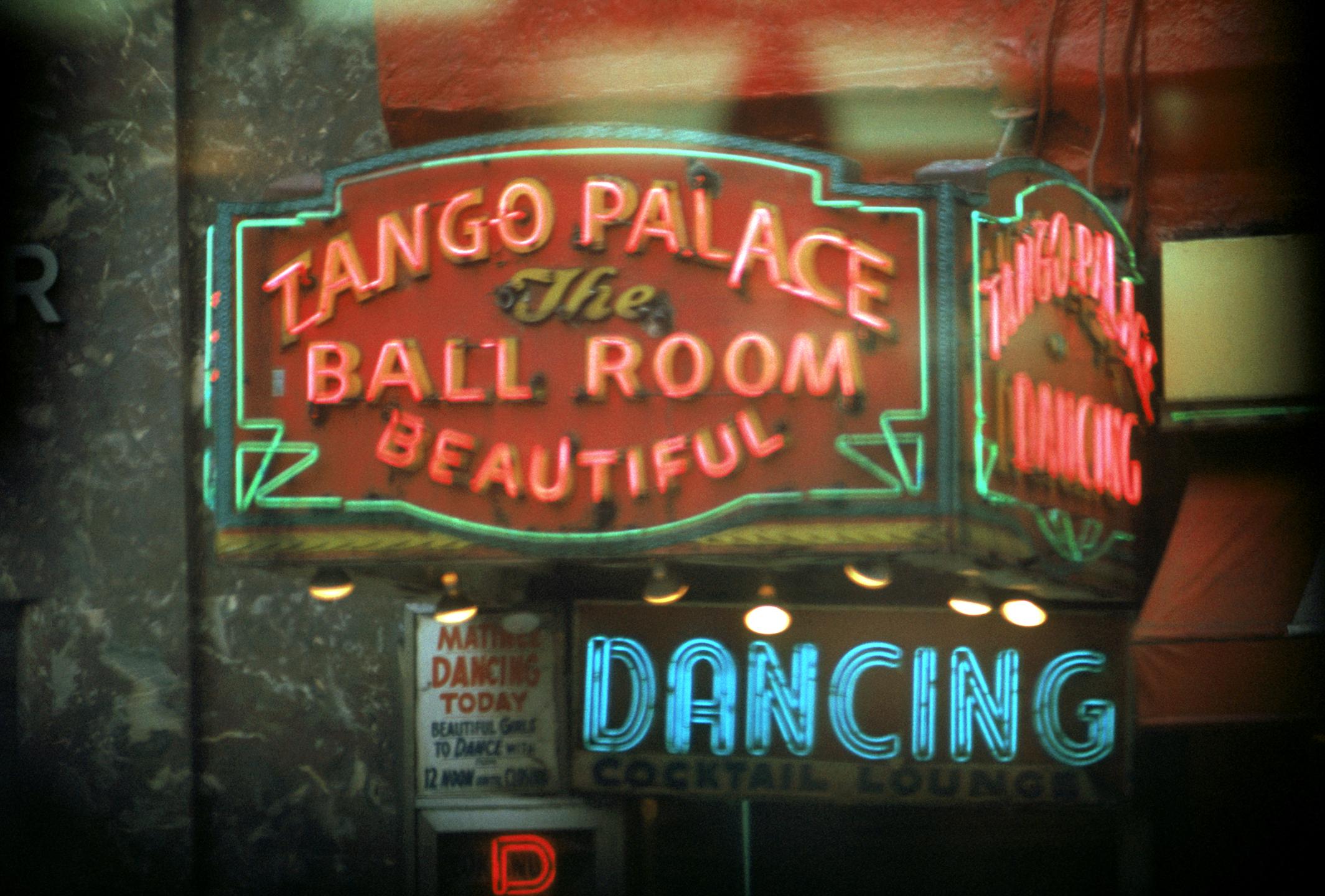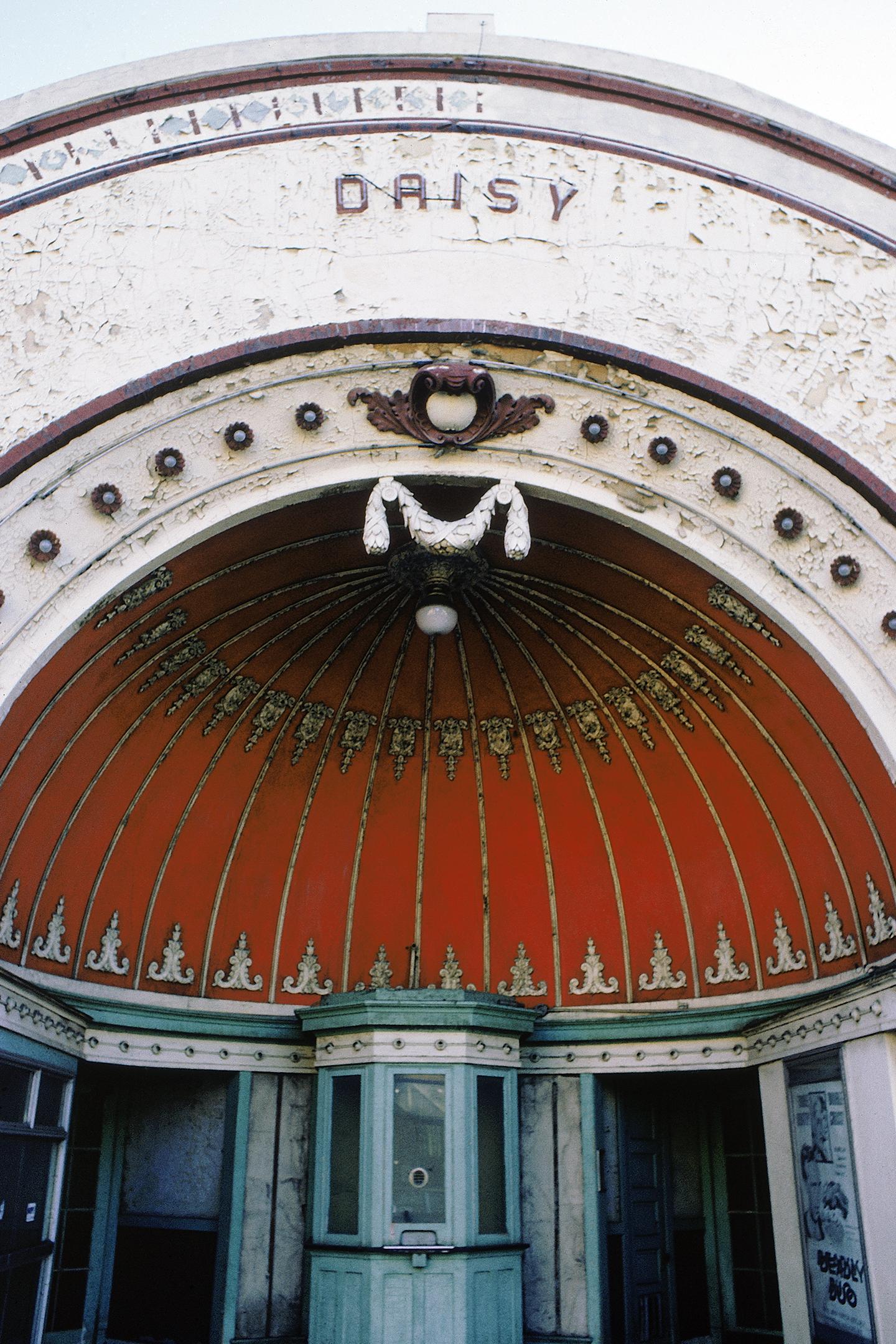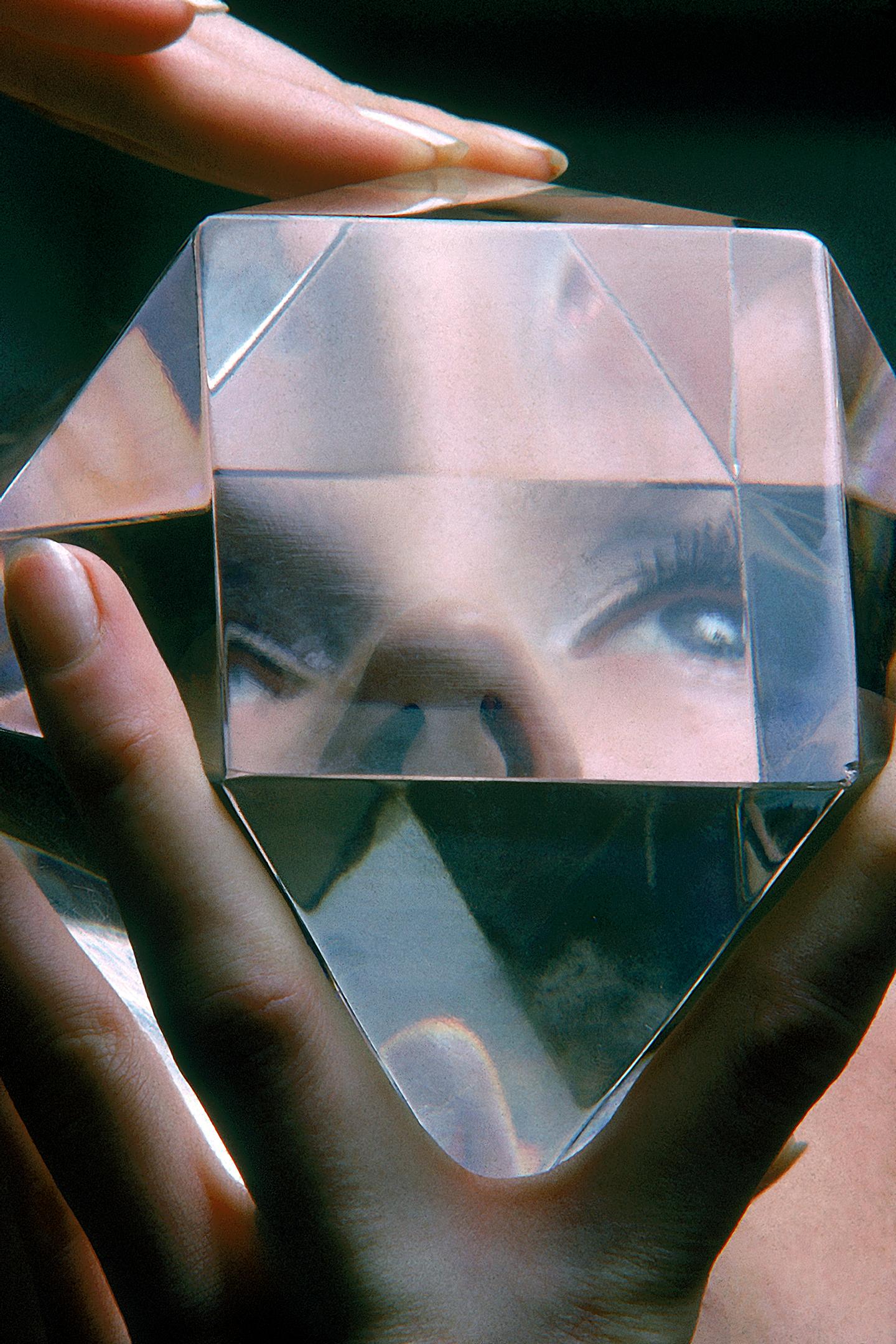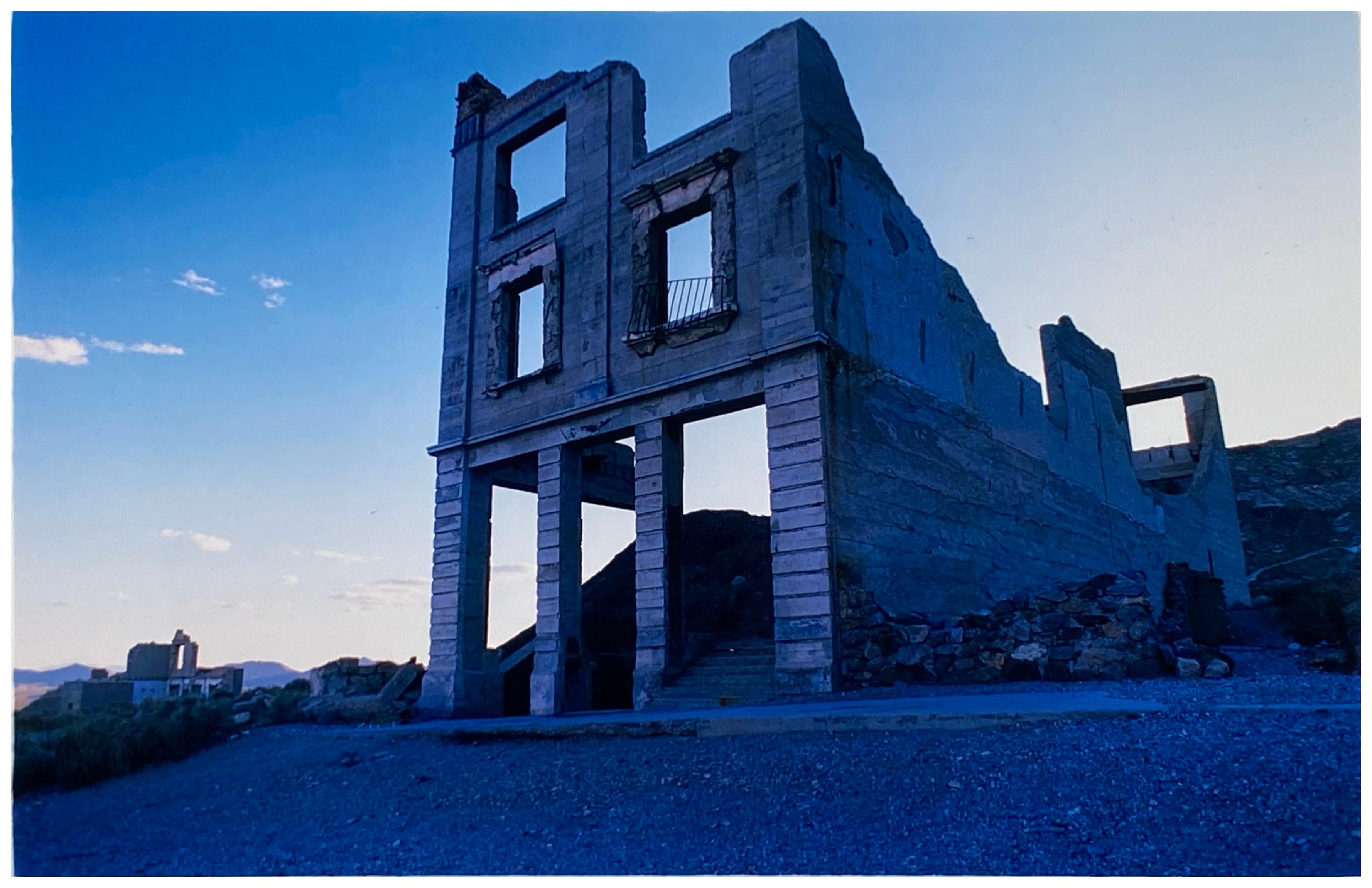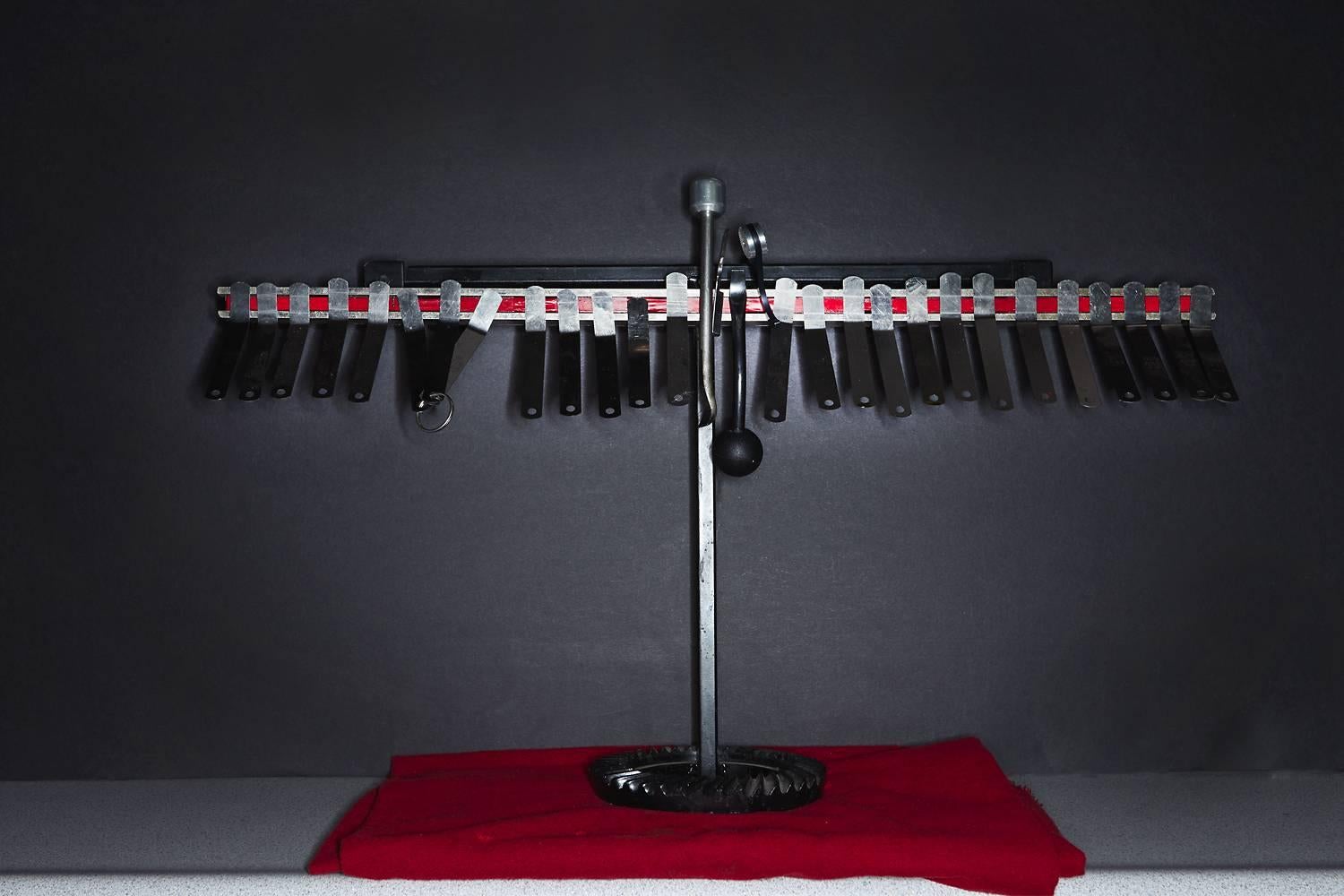Items Similar to Colored Photograph Of Nerturei Karta Children Playing
Want more images or videos?
Request additional images or videos from the seller
1 of 11
UnknownColored Photograph Of Nerturei Karta Children Playing
About the Item
Neturei Karta (Jewish Babylonian Aramaic: נָטוֹרֵי קַרְתָּא nāṭōrē qarṯā, literally "Guardians of the City") is a religious group of Haredi Jews, formally created in Jerusalem, British Mandate of Palestine, in 1938, splitting off from Agudas Yisrael. Neturei Karta opposes Zionism and calls for a "peaceful dismantling" of the State of Israel, in the belief that Jews are forbidden to have their own state until the coming of the Jewish Messiah and that the state of Israel is a rebellion against god. While the Neturei Karta describe themselves as true traditional Jews, the more secular US-based Jewish Anti-Defamation League has described them as "the farthest fringes of Judaism".
In Israel some members also pray at affiliated beit midrash, in Jerusalem's Meah Shearim neighborhood and in Ramat Beit Shemesh Bet. Neturei Karta states that no official count of the number of members exists. The Jewish Virtual Library puts their numbers at 5,000, while the Anti-Defamation League estimates that fewer than 100 members of the community take part in anti-Israel activism. According to the Anti-Defamation League, members of Neturei Karta have a long history of "extremist statements" and support for notable anti-Zionists and Islamists.
According to the US branch Neturei Karta:
"The name Neturei Karta is a name usually given to those people who regularly pray in the Neturei Karta synagogues (Torah Ve'Yirah Jerusalem, Torah U'Tefillah London, Torah U'Tefillah NY, Beis Yehudi Upstate NY, etc.), study in or send their children to educational institutions run by Neturei Karta, or actively participate in activities, assemblies or demonstrations called by the Neturei Karta".
Originally the organization was called Chevrat HaChayim (Society of Life); however this name was quickly supplanted in favor of the name Neturei Karta.
The name Neturei Karta literally means "Guardians of the City" in Aramaic and is derived from a narrative on page 76c of Tractate Hagigah in the Jerusalem Talmud. There it is related that Rabbi Judah haNasi sent two rabbis on a tour of inspection:
In one town they asked to see the "guardians of the city" and the city guard was paraded before them. They said that these were not the guardians of the city but its destroyers, which prompted the citizens to ask who, then, could be considered the guardians. The rabbis answered, "The scribes and the scholars," referring them to Tehillim (Psalms) Chapter 127.
It is this role that Neturei Karta see themselves as fulfilling by defending what they believe is "the position of the Torah and authentic unadulterated Judaism."
Generally, members of Neturei Karta are descendants of Hungarian Jews and Lithuanian Jews who were students of the Gaon of Vilna (known as Perushim) who had settled in Jerusalem in the early nineteenth century. In the late nineteenth century, their ancestors participated in the creation of new neighborhoods outside the city walls to alleviate overcrowding in the Old City, and most are now concentrated in the neighborhood of Batei Ungarin and the larger Meah Shearim neighborhood.
At the time, they were vocal opponents to the new political ideology of Zionism that was attempting to assert Jewish sovereignty in Ottoman-controlled Palestine. They resented the new arrivals, who were predominantly non-religious, while they asserted that Jewish redemption could be brought about only by the Jewish messiah.
Members of Neturei Karta at the Quds Day protests in Berlin 2014
Neturei Karta was founded by Rabbi Amram Blau and Rabbi Aharon Katzenelbogen. Rabbi Blau was a native of Meah Shearim in Jerusalem and was active in the Agudat Israel during the British Mandate era. However, by the 1930s, the Aguda began to adopt a more compromising and accommodationist approach to the Zionist movement. This caused Rabbi Blau to split with the Aguda in 1937 and cofound Chevrat HaChayim (with Rabbi Katzenelbogen), which was soon to be known thereafter as Neturei Karta.
Other Orthodox Jewish movements, including some who oppose Zionism, have denounced the activities of the radical branch of Neturei Karta. According to The Guardian, "[e]ven among Haredi, or ultra-Orthodox circles, the Neturei Karta are regarded as a wild fringe". Neturei Karta is sometimes confused with Satmar, due to both being anti-Zionist; however, they are separate groups and have had disagreements. For example, Satmar criticized Neturei Karta for attending a 2006 holocaust revisionist conference in Iran. Neturei Karta asserts that the mass media deliberately downplays their viewpoint and makes them out to be few in number. Their protests in America are usually attended by, at most, a few dozen people. In Israel, the group's protests typically attract several hundred participants, depending on the nature of the protest and its location.
In July 2013, the Shin Bet arrested a 46-year-old member of Neturei Karta for allegedly attempting to spy on Israel for Iran. As part of a plea deal, the man was sentenced to 41⁄2 years in prison. Neturei Karta has denied that he had ever been a member of their group.
Neturei Karta's website states that its members "frequently participate[s] in public burning of the Israeli flag." On the Jewish holiday of Purim, Neturei Karta members have routinely burned Israeli flags in celebrations in cities such as London, Brooklyn and Jerusalem.
While many in Neturei Karta chose to simply ignore the State of Israel, this has become more difficult. Some took steps to condemn Israel and bring about its eventual dismantling until the coming of the Messiah. Chief among these was Moshe Hirsch, leader of an activist branch of Neturei Karta, who served in Yasser Arafat's cabinet as Minister for Jewish Affairs.
Neturei Karta stress what is said in the mussaf Shemona Esrei ("The Standing Prayer") of Yom Tov, that because of their sins, the Jewish people went into exile from the Land of Israel ("umipnei chatoeinu golinu meiartzeinu"). Additionally, they maintain the view – based on the Babylonian Talmud– that any form of forceful recapture of the Land of Israel is a violation of divine will. They believe that the restoration of the Land of Israel to the Jews should happen only with the coming of the Messiah, not by self-determination.
Neturei Karta believe that the exile of the Jews can end only with the arrival of the Messiah, and that human attempts to establish Jewish sovereignty over the Land of Israel are sinful. In Neturei Karta's view, Zionism is a presumptuous affront against God. Chief among their arguments against Zionism is the Talmudic concept of the so-called Three Oaths, extracted from the discussion of certain portions of the Bible. It states that a pact consisting of three oaths was made between God, the Jewish people, and the nations of the world, when the Jews were sent into exile. One provision of the pact was that the Jews would not rebel against the non-Jewish world that gave them sanctuary; a second was that they would not immigrate en masse to the Land of Israel. In return, the gentile nations promised not to persecute the Jews. By rebelling against this pact, they argued, the Jewish people were engaging in rebellion against God.
The Neturei Karta synagogues follow the customs of the Gaon of Vilna, due to Neturei Karta's origin within the Lithuanian rather than Hasidic branch of ultra-Orthodox Judaism. Neturei Karta is not a Hasidic but a Litvish group; they are often mistaken for Hasidim because their style of dress (including a shtreimel on Shabbos) is very similar to that of Hasidim. This style of dress is not unique to Neturei Karta, but is also the style of other Jerusalem Litvaks, such as Rabbi Yosef Sholom Eliashiv and his followers. Furthermore, Shomer Emunim, a Hasidic group with a similar anti-Zionist ideology, is often bundled together with Neturei Karta. Typically, the Jerusalem Neturei Karta will keep the customs of the "Old Yishuv" of the city of Jerusalem even when living outside of Jerusalem or even when living abroad, as a demonstration of their love for and connection to the Holy Land.
- Dimensions:Height: 11 in (27.94 cm)Width: 14 in (35.56 cm)
- Medium:
- Period:
- Condition:Minor Toning. Please see photos.
- Gallery Location:Surfside, FL
- Reference Number:1stDibs: LU3826629332
About the Seller
4.9
Platinum Seller
These expertly vetted sellers are 1stDibs' most experienced sellers and are rated highest by our customers.
Established in 1995
1stDibs seller since 2014
1,565 sales on 1stDibs
Typical response time: 1 hour
- ShippingRetrieving quote...Ships From: Surfside, FL
- Return PolicyA return for this item may be initiated within 3 days of delivery.
More From This SellerView All
- Large Vintage Photograph Polaroid Transfer Photo Print Gardens Versailles ParisBy David AschkenasLocated in Surfside, FLLarge scale print, 24 X 36 inches. Framed to 29.5 X 41.5. This was described as Polaroid transfer print. It has the feel of a Frisson print. It is hand signed in pencil and dated. It is done in a sepia color tone. The color might have possibly shifted a bit. They are moody atmospheric pieces. These are outside Paris, I believe at Versailles. David Aschkenas is a self-taught photographer making fine art and freelance photography for the past 25 years. He has been the recipient of grants from the NEA and the Polaroid Corporation. He makes photographs for corporations and editorial clients around the world. Aschkenas has been a photographer in Pittsburgh for 30 years, specializing in editorial and fine art photography (he shot Richard Serra's Tilted Arc in the early 1980's) Inspired by Weegee, James Van Der Zee...Category
1990s Modern Color Photography
MaterialsPhotographic Paper
- Large Vintage Photograph Polaroid Transfer Photo Print Policeman Smoking, ParisBy David AschkenasLocated in Surfside, FLLarge scale print, 24 X 34 inches. Framed to 31 X 40. This was described as Polaroid transfer print. It has the feel of a Frisson print. It is hand signed in pencil and dated. It is done in a sepia color tone. The color might have possibly shifted a bit. They are moody atmospheric pieces. These are outside Paris, I believe at Versailles. David Aschkenas is a self-taught photographer making fine art and freelance photography for the past 25 years. He has been the recipient of grants from the NEA and the Polaroid Corporation. He makes photographs for corporations and editorial clients around the world. Aschkenas has been a photographer in Pittsburgh for 30 years, specializing in editorial and fine art photography (he shot Richard Serra's Tilted Arc in the early 1980's) Inspired by Weegee, James Van Der Zee...Category
1990s Modern Color Photography
MaterialsPhotographic Paper
- Vintage Photograph Cibachrome Tibetan Prayer Flags Colorful Vibrant Photo PrintLocated in Surfside, FLMat measures 20 X 26 sight measures 13 X 19.5 Mark Abrahamson is an American Postwar & Contemporary artist who was born in 1944. Mark completed a BA at Whitman College in Walla Wa...Category
1980s Color Photography
MaterialsPhotographic Paper, C Print, Color
- Kenneth Snelson Vintage C-Print Panoramic Photograph of Paris Chromogenic PhotoLocated in Surfside, FLKenneth Snelson (American, 1927-2016). Photograph depicting a panorama of the Seine river and bridges in Paris, France Hand signed, dated 1985, numbe...Category
1980s Contemporary Color Photography
MaterialsPhotographic Paper, C Print
- Large Scale Photograph Archival Pigment Print, Detroit Color Photo Doug RickardBy Doug RickardLocated in Surfside, FLDoug Rickard (American b.1968) Limited Edition Archival Pigment Print. Features the work titled; A New American Picture - Detroit. Signed on verso and numbered 4/5. Work: 26 in. x 41 1/2 in. Frame: 26 1/2 in. x 42 in. Doug Rickard’s A New American Picture offers a startling and fresh perspective on American street photography. All of the images are appropriated from Google Street View; over a period of two years, Rickard took advantage of the technology platform’s comprehensive image archive to virtually drive the unseen and overlooked roads of America, bleak places that are forgotten, economically devastated, and abandoned. With an informed and deliberate eye, Rickard finds and decodes these previously photographed scenes of urban and rural decay. A New American Picture depicts American street scenes, located using the internet platform Google Street View. Over a four-year period, Rickard took advantage of Google’s massive image archive to virtually explore the roads of America looking for forgotten, economically devastated, and largely abandoned places. After locating and composing scenes of urban and rural decay, Rickard re-photographed the images on his computer screen with a tripod- mounted camera, freeing the image from its technological origins and re-presenting them on a new documentary plane. The low-resolution images that Rickard favors have a dissolved, painterly effect, and are occasionally populated with figures who acknowledge the camera, but whose faces are blurred, masking their identity. The photographs are thus imbued with an added surrealism and anonymity, which reinforces the isolation of the subjects and emphasizes the effects of an increasingly stratified American social structure. Rickard’s work evokes a connection to the tradition of American street photography, with knowing references to Walker Evans, Robert Frank and Stephen Shore. He both follows and advances that tradition, with a documentary strategy that acknowledges an increasingly technological world—a world in which a camera mounted on a moving car can generate evidence of the people and places it is leaving behind. Collectively, these images present a photographic portrait of the socially disenfranchised and economically powerless, those living an inversion of the American Dream.Doug Rickard (born 1968) is an American artist and photographer. He uses technologies such as Google Street View and YouTube to find images, which he then photographs on his computer monitor. His photography has been published in books, exhibited in galleries and held in the permanent collection of the San Francisco Museum of Modern Art. Rickard is best known for his book A New American Picture (2010). He is founder and publisher of the website on contemporary photography, American Suburb X, and the website These Americans which publishes some of his collection of found photographs. This work features a black, African American man in the foreground walking in a bleak neighborhood in Detroit, Michigan. Rickard was born in San Jose, California and brought up in Los Gatos in the San Francisco Bay Area. His father was a prominent pastor and many family members were preachers and missionaries, with a "very Reaganesque, patriotic view of America", a country "special and unique". Rickard studied United States history—slavery, civil rights—and sociology, at University of California, San Diego, and "lost his faith in this family vision. His adult view of America was a land not just of great achievement but also of massive injustice." At age 12 he witnessed his father having a secret extramarital affair, that years later in 1988 he confessed to his congregation. Rickard says this experience prompted him "to look for the fault lines in the American dream." He lives in Shingle Springs, near Sacramento, California. For his series A New American Picture, Rickard "wanted to look at the state of the country in these areas where opportunity is non-existent and where everything is broken down", where "the American dream was shattered or impossible to achieve". It is said that this work comments on United States politics, poverty, racial equality and the socioeconomic climate, class; the use of technology in art, privacy, surveillance, and the large quantity of images on the web. He cites as influences the photobooks American Photographs (1938) by Walker Evans, The Americans (1958) by Robert Frank, Uncommon Places (1982) by Stephen Shore and American Night (2003) by Paul Graham. The work was first exhibited as part of Anonymes: Unnamed American in Photography and Film, curated by David Campany and Diane Dufour at Le Bal, Paris, in 2010. To mark that occasion Rickard produced the first edition of the book, with the publisher White Press. Its first American museum show was at New York's Museum of Modern Art. Select Publications: Aperture Remix. New York: Aperture, 2012. A series of books made in homage to another Aperture publication, each in an edition of 5 copies. Rickard's was a response to Uncommon Places by Stephen Shore. The other publications were by Rinko Kawauchi, Vik Muniz, Alec Soth, Taiyo Onorato & Nico Krebs, Martin Parr, Viviane Sassen, Penelope Umbrico and James Welling. Produced in conjunction with the exhibition Aperture Remix. A New American Picture. Nazraeli Press Six by Six, set 4 v. 5. Portland, OR: Nazraeli, 2012. Edition of 100 copies. The other volumes are by Robert and Kerstin Adams, Edward Burtynsky, Kenro Izu, Catherine Opie and Issei Suda. Staking Claim: a California Invitational. San Francisco: Modernbook, 2013. Photographs by Rickard as well as Matthew Brandt, Susan Burnstine, Eric William Carroll, John Chiara, Chris Engman, Robbert Flick, Todd Hido, Siri Kaur, Mona Kuhn, Matt Lipps, David Maisel, Klea McKenna, Mark Ruwedel, Paul Schiek and Christina Seely. Catalogue of an exhibition held at the Museum of Photographic Arts, San Diego, CA. Select Exhibitions: Solo exhibition 2012: Yossi Milo Gallery, New York, October–November 2012. Group Exhibitions 2010: Anonymes: L’Amérique sans nom: Photographie et Cinéma (Anonymous: Unnamed America in Photography and Film), Le Bal, Paris, September–December 2010. A thematic exhibition with works by Rickard as well as Jeff Wall, Walker Evans, Chauncey Hare, Lewis Baltz, Standish Lawder, Sharon Lockhart, Anthony Hernandez...Category
21st Century and Contemporary Contemporary Color Photography
MaterialsPhotographic Paper, Archival Pigment
- Rare Vintage Color C Print Photograph African Maasai Warrior Chromogenic PhotoBy Carol BeckwithLocated in Surfside, FLCarol Beckwith, (American, b. 1945), Maasai Portrait Chromogenic print on paper, from Beckwith's book "Maasai" (1980), Hand signed in pencil, dated and titled with name of sitter in margins, 19" x 16" Sheet. Carol Beckwith (1945-) is an American photographer, author, and artist known for her photojournalism documenting the indigenous tribal cultures of Africa, most notably in partnership with the Australian photographer Angela Fisher. Between them, Beckwith and Fisher have published 14 books, and have had their photos appear in National Geographic, Natural History, African Arts, The Observer Magazine, Time, Life, Vogue, Marie Claire and Elle. They continue to exhibit and lecture at galleries and museums worldwide, including The American Museum of Natural History and The Explorers Club in New York City, The Smithsonian Institution in Washington, DC, and the Royal Geographical Society in London. They have also collaborated on four films about African traditions. Together they have received numerous accolades, including the United Nations Award for Excellence, the Royal Geographical Society's Cherry Kearton Medal, two Anisfield-Wolf Book Awards, The Explorers Club Lowell Thomas Award, and the WINGS WorldQuest Lifetime Achievement Award. Carol Beckwith was born in Boston, Massachusetts, where she went on to attend both the School of the Museum of Fine Arts, Boston and Goucher College in Maryland. After obtaining her degree in Painting and Photography she won a traveling fellowship from the Boston Museum, which let her travel to other countries for the first time. She spent seven months in Japan, living in a Zen temple and studying calligraphy painting. She continued to travel through Southeast Asia and New Guinea, where she witnessed a "sing-sing", a gathering of 90,000 Highland warriors, in Mount Hagen, and paddled up Chambri Lakes in a canoe, an experience she called "one of the most wonderful, and in a way formative, experiences in my life." Her first trip to Africa was in 1973, when she was invited to spend Christmas with a friend in Kenya. Beckwith bought a 45-day roundtrip ticket and ended up staying eight months. There she encountered the Maasai people who invited her to witness a female circumcision ceremony. Astonished by the ritual, she then determined to spend more time with the Maasai. Beckwith studied photography in college but had initially intended to become a painter. It was during her travels through New Guinea that she realized the advantages of photography, saying that "there was such a vast amount of exciting material that I began to photograph instead, approaching photography with the eye of a painter in terms of light, color, composition. I wanted the images to be multi layered experiences in a way that a painting is. . . [Photography] seemed to be a more suitable medium for the pace of travel." Beckwith's first major collaboration was with Tepilit Ole Saitoti, an anthropologist and former Maasai warrior...Category
1970s Contemporary Color Photography
MaterialsPhotographic Paper, C Print
You May Also Like
- Tango PalaceBy Jack RobinsonLocated in Memphis, TNThe Tango Palace Ballroom was a dance club located at Broadway and 48th in New York City. Its neon lights and panels depicting couples dancing interested Jack, and he photographed th...Category
1960s Color Photography
MaterialsPhotographic Film, Photographic Paper
- Have a CokeBy Jack RobinsonLocated in Memphis, TNJack snapped this photo of stacked Coca-Cola bottles in their painted wooden crates in the mid 1960s. He loved photographing bright colors and patterns...Category
1960s Color Photography
MaterialsPhotographic Film, Photographic Paper
- Daisy TheaterBy Jack RobinsonLocated in Memphis, TNNow called the "Old" Daisy, The Daisy Theater opened on the iconic Beale Street in Memphis, TN in 1913. Jack photographed the Daisy during a visit with his parents in 1965. It still ...Category
1960s Color Photography
MaterialsPhotographic Film, Photographic Paper
- PrismBy Jack RobinsonLocated in Memphis, TNJack took this photograph of a model distorted through a prism in the early 1960s. In his personal work, he enjoyed shooting the human body from unexpected angles, the images at time...Category
1960s Color Photography
MaterialsPhotographic Film, Photographic Paper
- Cook Bank Building, Rhyolite, Nevada - American Architecture Color PhotographyBy Richard HeepsLocated in Cambridge, GBThe Cook Bank Building, in Rhyolite, Nevada, is a metaphor for the ghost town in which it sits. Once booming in the gold rush, these historic relics are ...Category
Early 2000s Pop Art Color Photography
MaterialsPhotographic Paper, C Print, Color, Silver Gelatin
- Automobili II - ( Ferrari ) - details at race car performance garageBy Frank SchottLocated in San Francisco, CAfrom a series of Industrial Style still life photographs captured at a high performance race car repair shop 48 x 72inches / 122cm x 183cm signed edition of 7 27 x 40 inches / 69cm...Category
21st Century and Contemporary Contemporary Color Photography
MaterialsArchival Pigment, Archival Ink, Archival Paper, Photographic Paper
Recently Viewed
View AllMore Ways To Browse
1930s Childrens
Vintage Children Playing
Children Playing Vintage
Vintage Childrens Wall Art
The Scribe
Vintage Childrens Dresses
London Paper Dress Vintage
Holy Land Art
Beige Large Ottoman
Vintage British Flag
Photographs Iran
Torah Art
Vintage State Flags
Jewish Prayer Art
Palestine Wall Art
Long Vintage Formal Dress
Vintage Split Dress
Jewish Torah
